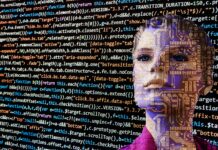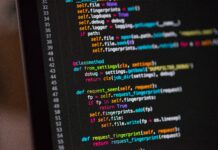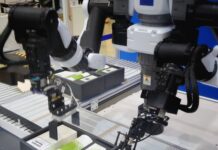Cybersecurity: the idea of being protected from unauthorized users of electronic devices. It is a word that you may have heard increasingly over the last few years as the struggle of being protected online greatens. A recent study showed that hackers are attacked every 39 seconds which is around 2,444 attacks a day. These attacks can target individuals in their own homes to large corporate companies that store huge amounts of data. As technology becomes more advanced, the attacks are becoming more complex. This is why the implementation of effective cybersecurity is so necessary. How could Artificial Intelligence (AI) help solve the ever-growing issue of cyber-attacks?
Networks
Technology often relies on current data to create a secure network and companies use multiple defense mechanisms such as firewalls, antiviral software, policies, backup policies to protect themselves from an attack.
One way AI can be used to reduce the threat of cyber-attacks and increasing cybersecurity is by detecting the attack before it is carried out. Machine learning algorithms can be adapted in order to identify anomalies or unusual behaviors within a network by analyzing patterns. AI can collect large amounts of data from multiple sources; identifying threats that would usually be missed. By using AI to analyze network traffic, we would be able to save lots of time and money since humans do not need to devote huge amounts of effort to detect potential threats.
Monitoring behaviour
AI can be utilised in behavioural analytics- a way of analysing someone’s behaviour online and creating trends based on the analysis. Behaviours such as the time at which you login, the devices that you use and even how you scroll through web pages can be examined by AI and the more data AI is given, the better it can understand someone’s behaviour. Whilst this may sound disturbing, there are some benefits. AI will now be able to monitor and highlight any abnormalities in someone’s online behaviour so it can notify a company to take action. For example, someone could send deliveries to a new location or have a new typing pattern which could suggest they are trying to hack something. This would trigger further verification of the user to ensure that they are legitimate and authorised.
Behaviour analytics can also be used to detect phishing emails. Phishing is when hackers send emails to users pretending to be a legitimate person or company. The email will generally ask for money or private information such as your bank details. Behaviour analytics examines the style of writing, grammar and word-choices to build a profile on a certain user. AI will be able to notice any changes to these features, highlighting that someone is trying to impersonate a user.
Biometric authentication
From touch ID to face recognition, biometric authentication is becoming more common in many of the devices we use. Whilst they may be convenient, biometric authentication can be easily hacked. An example of where Artificial intelligence is being used to create more secure authentication is Apple’s Face ID. Face ID detects your facial features, infrared sensors and neural engines. Then AI will create a face model and when you unlock your phone with Face ID, it will recognize similarities. AI allows Face ID to work in various conditions so whether you decide to change your hairstyle or the lighting is different, you will be able to unlock your phone!
Recovery Process
An advantage of using AI over humans is that the use of deep neural networks will allow computers to identify the potential consequences of an attack. Deep neural networks are artificial neural networks which have multiple layers between the inputs and outputs. The multiple layers are needed so that data passes through a number of steps for a pattern to be inferred. Companies can provide AI with data from past attacks, attacks from other companies and the outcomes of these attacks. AI has the potential to carry out an in-depth analysis which will allow it to predict possible results of an attack allowing a company to improve its disaster recovery policy.
In the event of a cyber-attack, Artificial Intelligence can make the process of recovering a lot quicker. Instead of manually identifying the cause, severity and consequences of the attack, AI can determine all these factors as well as recommend the next best steps to take. Through AI, companies can immediately implement recovery strategies and trigger policies such as obtaining all backed up files. This will greatly lessen the amount of damage an attack will do since the time taken to put responses into place becomes a lot quicker.
Darktrace- a company using AI to tackle the cyberspace
Darktrace is a company that specialises in using AI technology in cybersecurity. The company has a Cyber AI platform which is used by over 3,500 organizations across the world. Through the use of unsupervised machine learning, the self-learning cyber AI platform opens up the possibility of presenting new patterns that have not been seen before. Moreover, the platform has the ability to differentiate between company members and hackers through fine differences in these patterns.
Another feature of Darktrace is its autonomous response called the Antigena Network. This network can detect and disrupt emerging attacks at any time of the day. Powered by self-learning AI, it takes an average of 2 seconds for Antigena to stop a potential threat. The benefits of using the Antigena is that the network will continuously develop from every attack and form patterns from a company’s whole network, not from certain points.
Companies like Darktrace are revolutionising the way Artificial Intelligence is being used in the cyber industry, helping large organizations minimise the threat of attacks and protect their customers.
Conclusion
As technology continues to develop, hackers are continuously thinking of new, complex ways to attack making it harder for humans to keep up. The consequences of cyber attacks can be devastating for everyone: Large companies can lose millions of pounds and people’s private data can be made public. By 2022 it is expected that global spending on cybersecurity is set to reach $133.7 billion. Artificial Intelligence can help us accelerate the process of ensuring cybersecurity and ensuring that the effects of cyber-attacks are as low as possible.



















